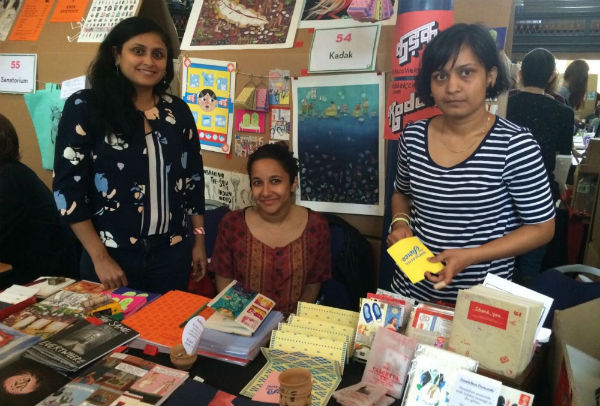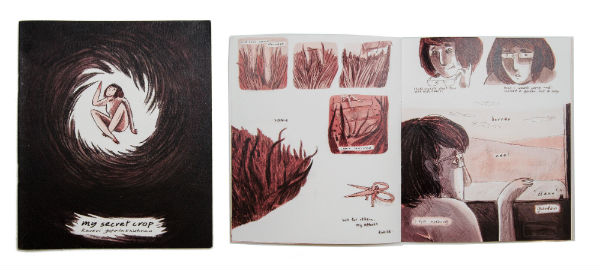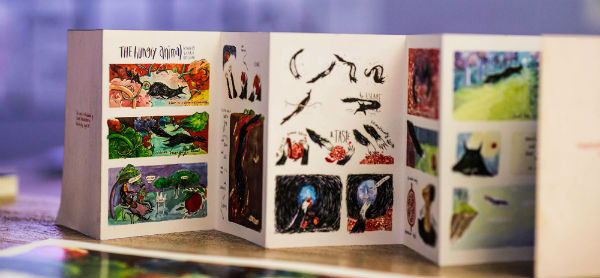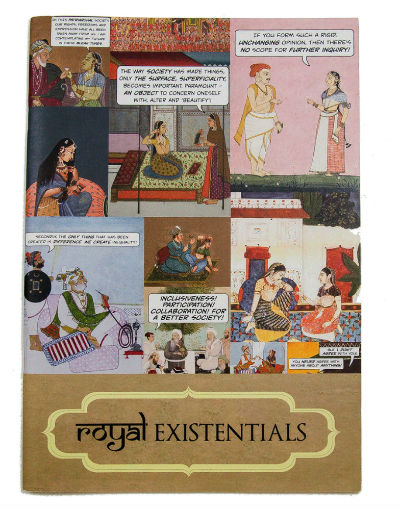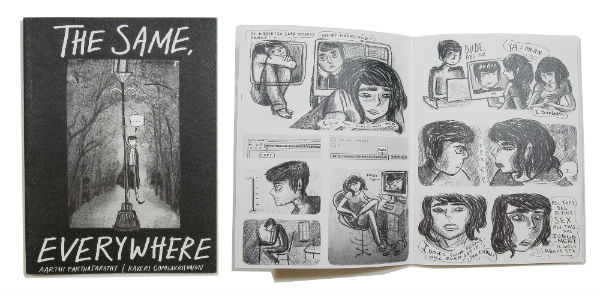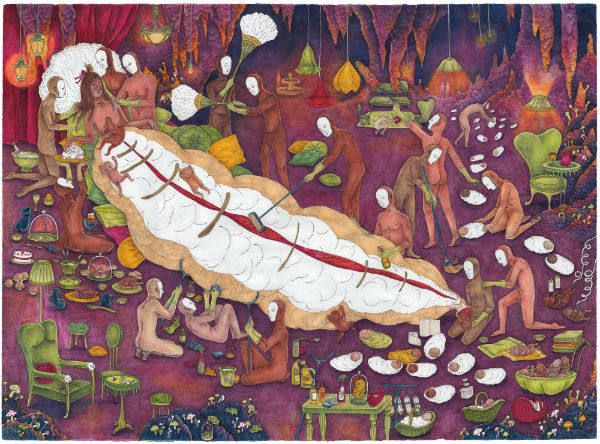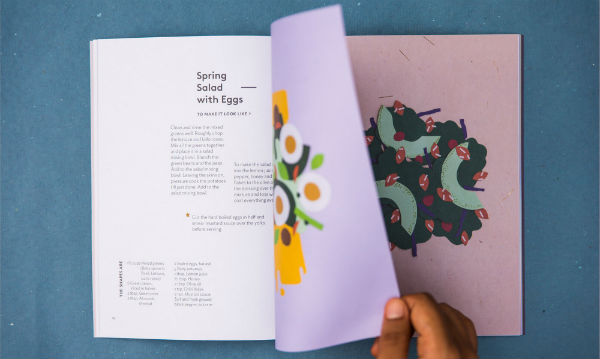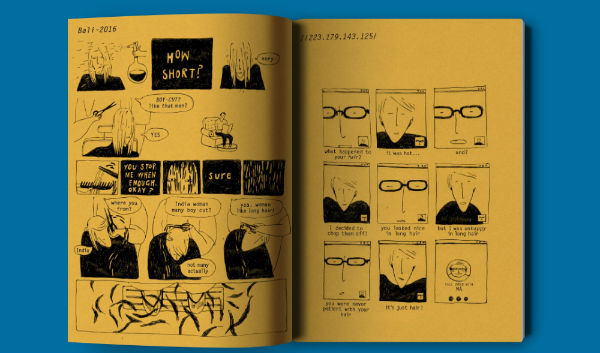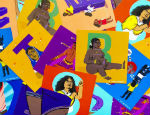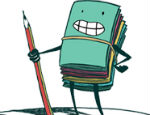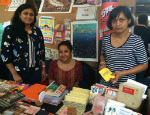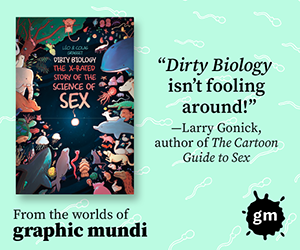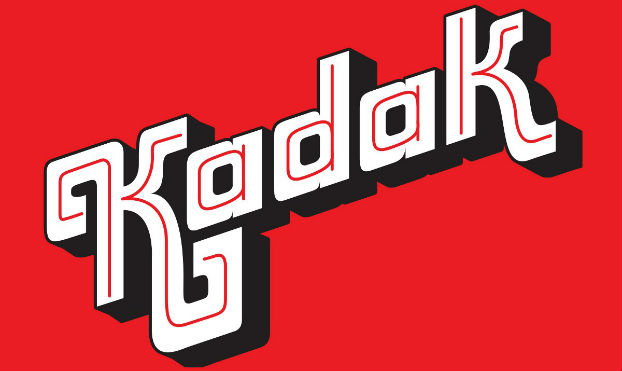
Ths week at Broken Frontier we began a three-part look at the work of the South Asian women artists who make up the Kadak Collective; a group that ELCAF-goers may remember as exhibitors at the festival’s 2016 incarnation. Yesterday we started with a focus on the practice of Mira Malhotra, Akhila Krishnan, Aindri Chakraborty and Kadak collaborator Valentino Vecchietti. Today we’re talking with more of the group about their comics, zines and illustration work, and tomorrow we conclude with a discussion about their ethos and story so far.
Kadak’s Mira Malhotra, Kaveri Gopalakrishnan at ELCAF in 2016
A quick reminder that Kadak describe themselves on their website as “a collective of South Asian women who work with graphic storytelling of different kinds. The women in Kadak engage with varied streams of inquiry in their art, which provides an invaluable insight into the preoccupations of a changing subcontinent. The stories and narratives move between the personal and political, question culture and examine subculture.”
Our spotlight falls on the remaining five artists Kaveri Gopalakrishnan, Aarthi Parthasarathy, Janine Shroff, Pavithra Dikshit and Garima Gupta below…
Kaveri Gopalakrishnan
Can you give us some background on yourself, your practice and the media you work in?
I’m a full-time comics creator, illustrator and art director. I occasionally work in character design/pre-production for animated films: essentially I enjoy world-building and creating narrative content. I’ve been running my own practice since 2013. I graduated in Animation Film Design from the National Institute of Design in Ahmedabad, India and worked with a merchandise start-up for a year before deciding to work independently.
Sample art from Kaveri’s My Secret Crop comic
I started self publishing my own comics, submitting them to anthologies in India and outside, and diving more into graphic narratives after attending summer school at SVA, New York City. My comics are usually hand-drawn personal narratives, which I enjoy making most. I’m currently working on two children’s books and an educational graphic novel (my second large book as an artist) and considering going back to school.
Kaveri’s The Hungry Animal minicomic
Could you describe the themes of your comics, zines or publications and tell us a little about your creative practice on them?
I naturally move toward telling “small stories”, quiet observations in my comics. I guess themes such as safety in public spaces, body image, loneliness in urban settings, etc., are common in my work. Whatever is running through my mind that I’d like to talk about: and comics are a medium I’m most comfortable in, at this point. It’s important to me to try and bring an honest voice in my work: to consider privileges, stay informed, try and learn more.
Aarthi Parthasarathy
Can you give us some background on yourself, your practice and the media you work in?
I work as a filmmaker and writer. I run a studio in Bangalore called Falana Films, and we work with different mediums, including film, animation, 3D, comics, illustration and music. I love comics – for me they’re the perfect medium – they are a wonderful way to build narrative, emotion, pause. What I enjoy is that engagement is up to the reader – they spend as much time as they feel is required with the image, with the text.
Art from Aarthi’s Royal Existentials comic
Could you describe the themes of your comics, zines or publications and tell us a little about your creative practice on them?
The themes in my work are often politics, gender, sexuality, urban India told with a mix of observational storytelling and most importantly, humour.
Janine Shroff
Can you give us some background on yourself, your practice and the media you work in?
I am originally from Bombay but I now live and work as a graphic designer in London. I did a B.A. at Camberwell College of Art followed by an M.A. with a specialisation in Illustration at Central St. Martins. I’m largely an illustrator and painter. My work is mostly hand-drawn, although I occasionally dabble with digital. I make largish (A1) detailed, figurative drawings following abstract narratives or themes.
Stylistically they are a little bit like Indian miniatures, with lots of detailed figures doing things. The subjects are usually quite personal but also focus on over-population, ideas about motherhood and women (queer and otherwise). My primary medium used to be ball-point pen but I now mix that in with acrylics and felt pens.
The Queen – one of Janine’s stunning and intricate painted images
Could you describe the themes of your comics, zines or publications and tell us a little about your creative practice on them?
I’m not really a zine maker, although I consider my work narrative within each painting, as there are small stories within larger single panel paintings. The one zine that I made recently was for Gender Bender at the Goethe Institut, which was a Kadak Collective collaboration, about stereotypical femininity and its intersection with drag.
Pavithra Dikshit
Can you give us some background on yourself, your practice and the media you work in?
I’m a graphic designer. A lot of my personal work stems from something that is happening at that point in my life. I largely enjoy making composite pieces of work rather than a singular piece of work. I like experimenting with different mediums and styles ranging from working on the computer to paper to type play. Research plays a very big part of the output. Whether it was my project, #ASaladEveryWeek or the piece on gender, Shifting; I spend hours reading and sketching before putting the piece together. And I believe that is a process I follow even when I work on my commercial projects as a graphic designer.
Could you describe the themes of your comics, zines or publications and tell us a little about your creative practice on them?
I’ve only published one piece, Discipline, so far. And like I previously mentioned; it stems from a personal space. There are no specific themes that I work with consistently but food culture is a recurring theme.
I like working by hand, using pencils, alcohol markers, whatever is around and accessible. My style is constantly changing depending on what the story is like and I like the unpredictability of that process. I often use nature/the natural world as a metaphor for feelings, while writing.
Garima Gupta
Can you give us some background on yourself, your practice and the media you work in?
I am an artist/researcher and I like using the comic format for narratives which are usually complex and layered. Thematically, I dabble with stories that explore the nature of human entanglements with their environment, natural or otherwise. I am currently working on a long term transmedia project regarding the ecological damage in Southeast Asia.
Could you describe the themes of your comics, zines or publications and tell us a little about your creative practice on them?
My last comic was called Boy-Cut (above). It is a short comic about how hair length defines gender and identity. The comic is a personal account, it documents my newly acquired ‘boy-cut’ (crew-cut/short hair) experience while traveling in Bali and Manila.
Join us for Part 3 tomorrow when Broken Frontier will be talking to the Kadak Collective about their story to date.
For more on the Kadak Collective visit their site here and you can see much more of the work in discussion here at their reading room on Medium (with store links where available). You can alos follow the Kadak Collective on Instagram here.
For regular updates on all things small press follow Andy Oliver on Twitter here.





